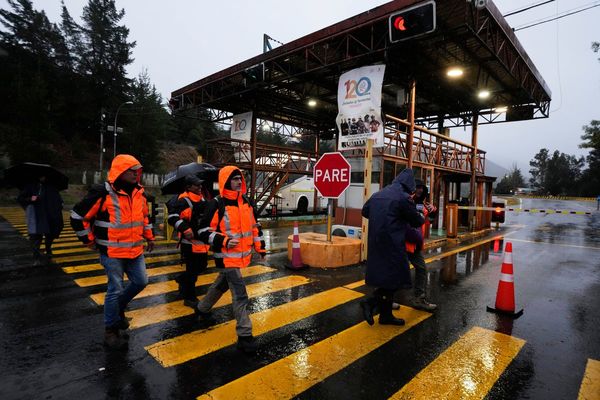The Soul’s evolution is a near-perfect embodiment of Kia’s progression as a brand over the past decade: It’s all grown-up now, affordable but not cheap, and refined but a little weird. Most of all, it just makes sense. I’ll admit to having been a Soul skeptic in the early days. The flashy light-up speakers and hamster-laden commercials made the car a tough sell for me, but that was then, and this is the 2020 Soul. This car is light years away from the one that hauled rodents to night clubs, but it’s still funky enough to be just as interesting.
Testing a different car every week, it’s hard to settle in and just “live” with a car. I’m always analyzing the experience and trying to determine where the strong points and weaknesses lie. After just a couple days in the Soul, it began to feel like an old friend – the family car that has seen more than a few melted crayons scraped off the back seat (Kia: This didn’t happen in my test loaner, I promise). Controls are where they’re expected to be, outward visibility is excellent in nearly every direction, and aside from a few gripes about the transmission and start-stop functionality, the driving experience is surprisingly engaging.
Performance
It’s not a stretch to say that Kia has done a good job of making the new Soul fun to drive. It would be a stretch to call the car fast, but here it’s the feeling of agility and sprightliness that matters more. In the GT-Line Turbo, the 1.6-liter turbocharged four-cylinder produces 201 horsepower and has more than enough juice for daily driving. The seven-speed dual-clutch gearbox is paired perfectly with the engine and helps extract as much power as possible from the turbocharger.
The GT-Line Turbo also gets sport-tuned suspension and 18-inch wheels, which together give the car confident handling and surprisingly little body roll when things get twisty. The Soul probably isn’t at the top of anyone’s autocross leaderboard, but the package is well-suited to people that actually care about driving.
The most noteworthy gripe with the Kia’s drivetrain setup is the dual-clutch gearbox. I’ll be the first one to shout joy from the rooftops that there’s an actual transmission in the Soul instead of a CVT, but there are some issues with how the seven-speed handles low-speeds. In parking lots and around town, the gearbox stumbles a bit when moving in traffic.
The engine’s start-stop feature complicates things further, seemingly catching the transmission off guard if a quick start is needed. There was more than one occasion pulling into traffic, where the engine would start, and the transmission took a moment to figure out that all of us needed to be moving forward. Once the car is rolling, the dual-clutch setup performs admirably, and makes driving so much more pleasurable than it could have been with a CVT.
Design and Comfort
Though the shape is not a personal favorite of mine, it’s hard to argue with the practicality that a box on wheels brings. The car’s compact size betrays its cavernous interior space, and the cargo area is large enough to carry our absolute tank of a stroller, two small coolers and enough gear for a weekend-long road trip. The leatherette and cloth upholstery remains comfortable for the long haul, though an option for ventilated seats would be a welcome addition for summer driving. Front passengers will find well-bolstered and well-padded seats with plenty of lumbar support for the driver’s seat. Sadly, the passenger’s seat is lacking power adjustments, but the shape and padding is just as good as the driver’s side.
I’m immediately apprehensive of compact cars’ ability to handle two car seats, but my concerns with the Soul’s back seat accommodations were mostly over-blown. When the driver’s seat is set to my preferred position, my younger daughter’s full-size seat won’t fit behind it in most vehicles smaller than a mid-size SUV like a Honda Pilot. That’s true in the Soul, but the high roof, low step-in height, and oddly-shaped back door openings make loading her into the tall car seat a breeze. It also meant that my five-foot-tall wife, who has trouble loading the kids into anything taller than a Miata, could get the kids in and out of the car without much hassle.
Technology
The Soul model line covers over $10,000 from bottom to top: The base LX trim starts at $17,490 and my GT-Line Turbo ran just over $28,000. That’s quite the spread, but no matter what you pay for one, every Soul supports Apple CarPlay and Android Auto. This means that every vehicle in the lineup is capable of in-dash navigation, hands-free texting, and intuitive voice-commands. That alone is worth a nod, but there’s more to like.
Kia’s UVO infotainment software is one of the easiest and most intuitive systems on the market today. Icons are large and the menus are clearly labeled to make for very simple use without much of a learning curve. The 10.25-inch wide-screen display that lives in the top trim’s dash is colorful and crisp, with wide viewing angles that stay clear in bright sunlight. There’s built-in navigation here, too, but Google Maps does the job when cell phone service works (in the mountains of New Hampshire it did not).
There’s a head-up display as well, but the execution here is puzzling. Similar to the Soul’s corporate cousin, the Hyundai Kona, there’s a fold-up plastic screen that displays the vehicle’s speed, cruise control info, and more. It works as a display, but the screen itself is distracting. As a funky tech upgrade, it fits the Soul’s character, but I’m left wondering why there couldn’t be a projection onto the windshield like in so many other vehicles.
The GT-Line Turbo comes with the full spectrum of advanced safety tech, including blind spot monitors, forward collision warnings, and more. For the most part, they work as expected and do so without being distracting or frightening. Alerts are prominent but not loud and are easily visible when displayed in the gauge cluster and head-up display. The blind spot monitors did seem to be caught off guard at certain points, missing vehicles that were moving too quickly, but worked well in most scenarios.
There’s a reason the Kia Soul has outlasted all of the other rolling boxes that hit the market around the same time, and it’s not the hamsters (ok, it might be the hamsters). Unlike the Scion xB and Nissan Cube (this one had other issues), the Soul has always had a well-thought-out feature set and a solid mix of fun and utility. I’ll avoid making the obvious pun of saying that the car has soul, but there’s a personality to the Kia that the others just couldn’t muster. It’s hard to argue with the headbanging hamsters from the car’s early days, but the new Soul’s got enough of its own merits to warrant a place on many people’s shopping lists.







